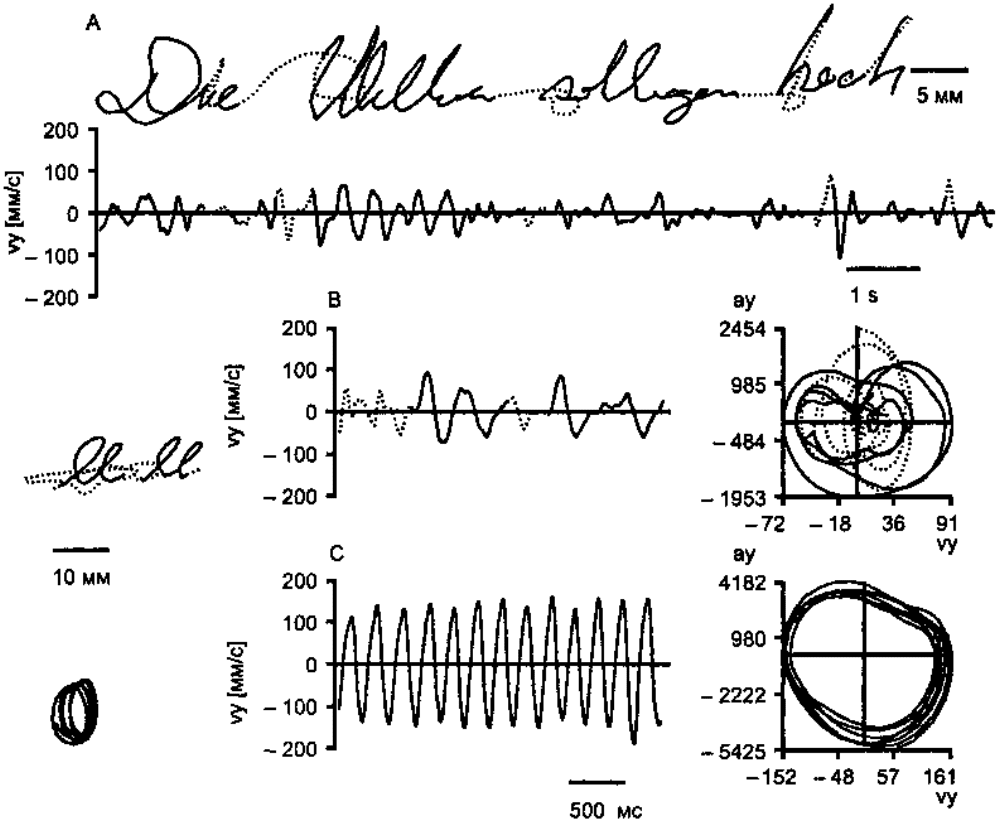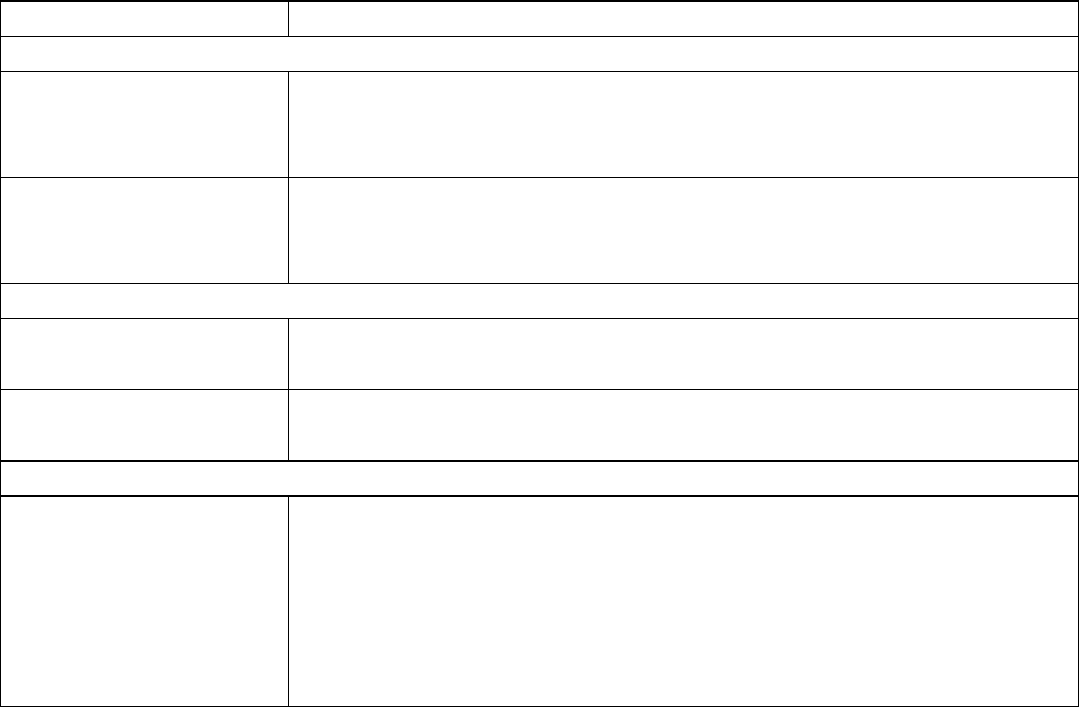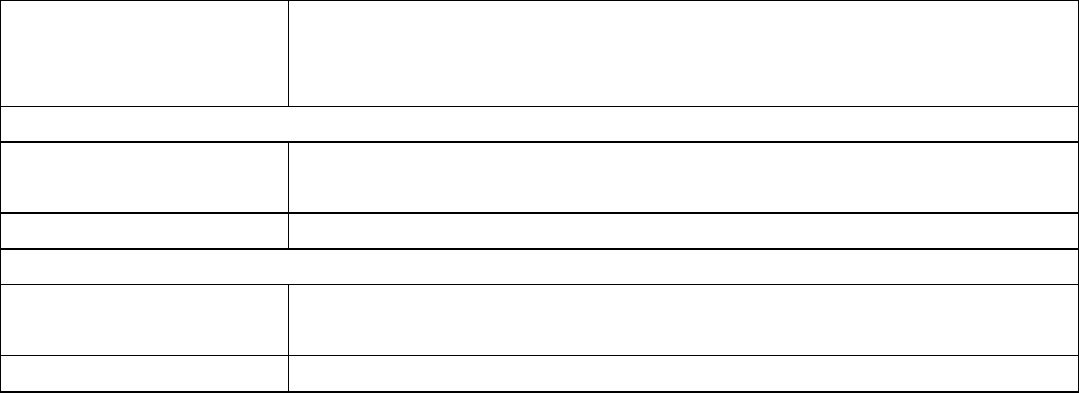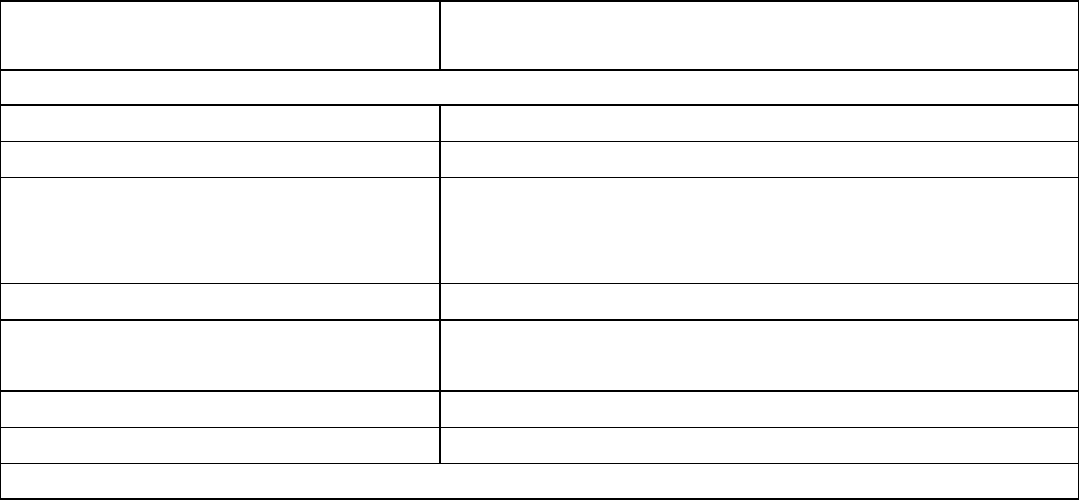Перре М., Бауман У. Клиническая психология
Подождите немного. Документ загружается.


Koob.ru
Рис. 25.3.2. Образец почерка пациента через 20 месяцев после инфаркта
мозжечка. Пунктирные линии показывают движения в воздухе. Проведенные
линии показывают движения на бумаге. (А) При написании предложения
соответствующая кривая скорости (vy) обнаруживает заметную нерегулярность,
и (В) даже при повторении простых букв движения не были автоматизированы.
(С) В отличие от этого пациент мог писать «кружок» абсолютно
автоматизированными движениями (С). Это особенно отчетливо видно на
фазовых диаграммах (справа), в которых для следующих друг за другом
моментов времени наносились соответствующая скорость (vy) и ускорение (ay)
(по Mai & Marquardt, 1996)
Такие стратегии контроля могут заключаться в том, чтобы путем
стабилизации суставов редуцировать степень свободы в движении или путем
замедления движения сделать возможным более точный визуальный контроль.
Использование этих стратегий контроля при новых заданиях или неуверенности
— это феномен, который обнаруживается у всех людей. У пациентов вследствие
первичного повреждения неуверенность появляется даже при давно знакомых
движениях, так что теперь и при простых и хорошо известных движениях
выбирается контролированное выполнение. Чтобы доказать, что это объяснение
Koob.ru
верно, следует показать, что при условиях с меньшим требованием контроля
должны иметь место автоматизированные движения. Мы говорим в этом случае
о сохраненных функциях. Рис. 25.3.2С показывает пример сохраненной функции.
Пациент страдает после повреждения мозжечка моторным расстройством
письма, которое явно обнаруживается уже при выполнении простых
комбинаций букв (см. рис. 25.3.2В). Но он мог выполнять совершенно
автоматизированные движения, когда от него требовали воспроизвести просто
«кружок» (рис. 25.3.2С).
Воспроизведение «кружков» тоже требует точной координации движений
пальцев и запястья. Поэтому кажется неубедительным, что трудности при
письме букв следует рассматривать как нарушение координации вследствие
поражения мозжечка. И представляется более убедительным, что трудности при
письме можно рассматривать как следствие повышенных усилий контроля.
Через 15 тренинговых часов функция письма этого пациента заметно
улучшилась. Эти данные подтверждают наше объяснение.
Открытие сохраненных функций позволяет, однако, не только
отграничить вторично обусловленные расстройства, но и применять тренинг
для редукции моторного расстройства. Во-первых, можно попытаться
расширить, постепенно модифицируя, те условия, которые еще допускают
ненарушенные движения. Сохраненные функции, кроме того, имеются в
распоряжении пациента в виде «опорных движений», на которые он может
ориентироваться, если старается исполнять автоматизированные движения, и
при других условиях. К тому же таким образом можно систематически
сравнивать нарушенные и ненарушенные движения. Ошибки (например,
определенное положение сустава, поза, манера держать карандаш), которые
ассоциированы с расстройством, могут тогда идентифицироваться и
корректироваться в тренинге. С опорой на эти принципы был разработан
тренинг письма и уже применен с успехом у пациентов с расстройствами
письма, которые возникали в рамках самых разных заболеваний (Mai &
Marquardt, 1995b).
Сохраненные функции имеют место также при других двигательных
расстройствах. В главе 25.1 (рис. 25.1.1) мы показывали запись движений
пациента с атаксией. В первой попытке пациент брал стеклянную бутылку.
Хватательное движение обнаруживало все признаки атактического движения. Во
второй попытке он хватал пластиковую бутылку. Хватательное движение
протекало плавно и спокойно и в значительной мере не было нарушенным (Mai
et al., 1995). Стремление лучше контролировать движения в «опасной» ситуации
со стеклянной бутылкой приводит к явно нарушенным движениям. Так что и в
этом случае компенсаторные механизмы, очевидно, вызывают не смягчение, а
усиление нарушения.
Эти наблюдения коренным образом изменили наши диагностические и
терапевтические стратегии. Исходный пункт — это гипотеза, что все
двигательные расстройства, которые мы наблюдаем, обусловлены первичными
поражениями и вторичными компенсаторными механизмами. Степень участия
Koob.ru
компенсаторных механизмов в возникновении расстройства может быть при
этом очень разной, например, при полном параличе участие может быть очень
незначительным, а при расстройстве, для которого наличие органического
поражения не доказано, — являться главной причиной. В любом случае
расстройства, которые можно свести к вторичной компенсации, судя по всему
лучше поддаются терапии, чем органически обусловленные расстройства.
Отграничение расстройств, которые представляют собой последствие вторичных
компенсаторных механизмов, требует коренных изменений диагностической
стратегии. Вместо того чтобы, как обычно, фиксировать только недостаточности
пациента, следовало бы систематически искать сохраненные функции. Это
обеспечивается только экспериментальной диагностикой, в которой условия
обследования (направляемые гипотезой) варьируются. Если у какого-то
пациента можно идентифицировать условия, при которых нарушенные обычно
движения протекают относительно нормально, то очевидны терапевтические
показания. Тем самым для психологов экспериментального направления
открывается широкое и многообещающее поле деятельности в лечении
моторных расстройств.
5. Оценка различных подходов интервенции
Оценка подходов интервенции должна ответить на два вопроса. Первое:
эффективна ли определенная интервенция, второе: лучше ли эта интервенция
альтернативных подходов. Для всех приведенных подходов интервенции было
показано в исследовательских работах, что, применяя их, можно добиться
некоторого смягчения двигательного расстройства. Методическое построение
этих работ довольно различно и охватывает исследования отдельных случаев и
групповые исследования с разными по величине выборками. «Идеальная»
исследовательская методика, включающая терапевтическую и контрольную
группу, рандомизированное распределение пациентов по группам и с
использованием больших выборок, пока не была реализована в этих работах.
Часто такое предприятие невозможно из этических и практических
соображений. Но и исследование терапии без контрольной группы и с
маленькой выборкой может быть информативным, если успех лечения может
быть однозначно измерен. Эта характеристика подходит к большинству
приведенных в этой главе расстройств. Такие работы могут показать, что
исследуемая интервенция в принципе может привести к улучшению, однако
они не позволяют дать достаточную оценку эффективности. Сравнение
конкурирующих подходов интервенции невозможно на этой базе данных, и
непосредственное сравнение различных интервенционных подходов до сих пор
предпринималось лишь в исключительных случаях (ср. прим. 25.3.1).
6. Литература
Altherr, P. & Becht, W. (1996). Verhaltenstherapie: Selbstmanagement in einer
Koob.ru
Kinder und Jugendpsychiatrie bei Personal und Patienten. In H. S. Reinecker & D.
Schmelzer (Hrsg.), Verhaltenstherapie, Selbstregulation, Selbstmanagement (S. 405-415).
Göttingen: Hogrefe.
Azrin, N. H. & Nunn, R. G. (1973). Habit reversal: A method of eliminating
nervous habits and tics. Behavior Research and Therapy, 11, 619-628.
Azrin, N. H., Nunn, R. G. & Frantz, S. E. (1980). Habit reversal vs. negative
practice treatment of nervous tics. Behavior Therapy, 11, 169-178.
Brandt, T., Dichgans, J., Diener, H. C. (1993). Therapie und Verlauf neurologischer
Erkrankungen (2. Aufl.). Stuttgart: Kohlhammer.
Bressman, S. B. & Greene, P. E. (1990). Treatment of hyperkinetic movement
disorders. Clinical Neuropharmacology, 8, 5l-75.
Butefisch, C, Hummelsheim, H., Denzler, P. & Mauritz, K. H. (1995). Repetitive
training of isolated movements improves the outcome of motor rehabilitation of the
centrally paretic hand. Journal of Neurological Science, 130, 59-68.
Eisert, H.-G. (1993). Hyperkinetische Störungen. In H.-C. Steinhausen & M. von
Aster (Hrsg.), Handbuch Verhaltenstherapie und Verhaltensmedizin bei Kindern und
Jugendlichen. Weinheim: Beltz Psychologie Verlags Union.
Factor, S. A., Podskalny, G. D. & Molho, E. S. (1995). Psychogenic movment
disorders: frequency, clinical profile, and characteristics. Journal of Neurology,
Neurosurgery, and Psychiatry, 59, 406-412.
Finney, J. W., Rapoff, M. A., Hall, C. L & Christophersen, E. R. (1983). Replication
and social validation of habit reversal treatment for tics. Behavior Therapy, 14, 116-126.
Goetz, C. G. (1986) Tics: Gilles de la Tourette syndrome. In P. J. Vinken, G. W.
Bruyn & H. L Klawans (Eds.), Handbook of Clinical Neurology, 5, Extrapyramidal Disorders
(pp. 627-639). New York: Elsevier.
Gowland, C., deBruin, H., Basmajian, J. V., Plews, N. & Burcea, I. (1992). Agonist
and antagonist activity during voluntary upper-limb movement in patients with
stroke. Physical Therapy, 72, 624-633.
Hummelsheim, H. & Mauritz, K.-H. (1993). Neurophysiologische Grundlagen
krankengymnastischer Übungsbehandlung bei Patienten mit zentralen Hemiparesen.
Fortschritte in Neurologie und Psychiatrie, 61, 208-216.
Lalli, J. S., Mauk, J. E., Goh, H. & Merlino, J. (1994). Successful behavioral
intervention to treat children who are reluctant to ambulate. Developmental Medicine
and Child Neurology, 36, 625-629.
Mai, N. (1996). Kompensation der Kompensationsmechanismen: Ein Ansatz zur
Behandlung motorischer Störungen. In G. Gross-Selbeck (Hrsg.), Aktuelle
Neuropädiatrie (S. 186-198). Wehr: Ciba-Geigy Verlag.
Mai, N., Marquardt, C. (1995a). Analyse und Therapie motorischer
Schreibstörungen. Psychologische Beiträge, 37, 538-582.
Mai, N., Marquardt, C. (1995b). Schreibtraining in der neurologischen Rehabilitation.
EKN-Materialien für die Rehabilitation. (Hrsg.: N. Mai, W. Ziegler, G. Kerhoff, N.
Troppmann). Dortmund: Borgmann Publishing.
Mai, N., Marquardt, C. (1996). Das vernachlässigte Verhalten: Kinematische
Analysen der Schreibbewegungen beim Schreibkrampf. In H. S. Reinecker & D.
Koob.ru
Schmelzer, (Hrsg.), Verhaltenstherapie, Selbstregulation, Selbstmanagement (S. 307-328).
Göttingen: Hogrefe.
Mai, N., Przywara, S., Hermsdörfer, J. & Marquardt, C. (1995). Behandlung der
posttraumatischen Ataxie. In Kuratorium ZNS (Hrsg.) Forschung und Praxis der
Neurologischen Rehabilitation - 10 Jahre Kuratorium ZNS (S. 241-256). Hamburg: In-
Transfer.
Marsden, C. D. (1995). Psychogenic problems associated with dystonia. Advances
of Neurology, 65, 319-326.
Mathiowetz, V. & Bass Haugen, J. (1994) Motor behavior research: implications
for therapeutic approaches to central nervous system dysfunction. The American Journal
of Occupational Therapy, 8, 733-745.
Süss-Burghart, H. (1996). Verhaltenstherapie mit einem 11 Jahre alten Jungen mit
der Diagnose Gilles-de-la-Tourette-Syndrom — ein Fallbericht. Verhaltenstherapie, 6,
100-106.
Teasell, R. W. & Shapiro, A. P. (1993). Rehabilitation of chronic motor conversion
disorders. Critical Review of Physical Rehabilitation, 5, 1013.
Teasell, R. W. & Shapiro, A. P. (1994). Strategic-behavioral Intervention in the
treatment of chronic nonorganic motor disorders. American Journal of Physical Medicine
& Rehabilitation, 73, 44-50.
Wagenaar, R. C, Meijer, O. G., Wieringen, P. C. W., Kuik, D. J., Hazenberg, G. J.,
Lindeboom, J., Wichers, F. & Rijswijk, H. (1990). The functional recovery of stroke: a
comparison between neuro-developmental treatment and the Brunnstrom method.
Scandinavian Journal of Rehabilitation Medicine. 22, 1-8.
Williams, D. T., Ford, B., Fahn, S. (1995). Phenomenology and Psychopathology
related to psychogenic movement disorders. Behavioral Neurology of Movement
Disorders. Advances in Neurology, 65, 231-257.
Wolf, S. L., Lecraw, D. E., Barton, L. A. & Jann, B. B. (1989). Forced use of
hemiplegic upper extremities to reverse the effect of learned nonuse among chronic
stroke and head injurec patients. Experimental Neurology, 104, 125-132.
Глава 26. Нарушения восприятия
26.1. Классификация и диагностика
Йозеф Циль
1. Значение восприятия
Восприятие представляет собой необходимую предпосылку для анализа и
познания окружающего мира, а также регуляции и контроля поведения; кроме
того, восприятие оказывает влияние на чувства и настроения (см. Lindsey &
Norman, 1981). Функции восприятия можно классифицировать относительно их
модальности и сложности, причем следует учитывать, что сложные функции

Koob.ru
(например, зрительное узнавание) хотя и предполагают наличие интактных
элементарных функций (например, острота зрения, цвето- и форморазличение),
но не могут быть объяснены ими в достаточной мере и тем самым представляют
собой самостоятельные функции более высокого уровня. Восприятие
предполагает наличие и других, самых разных видов психических функций,
например внимание и мотивация к получению информации (любопытство).
Такую же важную роль играет способность к долговременному хранению
воспринятого в памяти; без этой способности было бы немыслимым, например,
узнавание людей или предметов и формирование опыта как основы регуляции
поведения. С другой стороны, «качество» содержания нашей памяти зависит от
качества переработки и кодирования информации. Регуляция моторики также
осуществляется в значительной мере при помощи различных функций
восприятия. Наконец, именно восприятие дает человеку основания,
позволяющие ему считать свое самочувствие хорошим: воспринятое часто
вызывает в ЦНС дополнительные ощущения, создает определенное настроение
и оказывает на него свое влияние, при этом так называемые аффективные
компоненты сами могут выступать в роли информации. Таким образом,
нарушения восприятия могут (косвенно) приводить к нарушению других
когнитивных функций (например, памяти и планирования) или приводить к
изменению чувств и настроения.
Таблица 26.1.1. Обзор важнейших элементарных и сложных функций
восприятия в различных модальностях
Область
Функции восприятия
Зрение
Элементарные
функции
Поле зрения, острота зрения, цвето- и форморазличение,
стереопсис; восприятие положения, дистанции и
направления
Сложные функции
Узнавание (объектов, лиц, мест и т. д.)
Чтение
Пространственная ориентация
Слух
Элементарные
функции
Восприятие/различение высоты и громкости звука
Пространственный слух
Сложные функции
Восприятие музыки
Узнавание (шумов, сигналов, речи)
Осязание
Элементарные
функции
Экстрацептивная чувствительность (восприятие давления,
температуры, боли; локализация)
Проприоцептивная чувствительность (восприятие
положения и движения)
Различение признаков объекта (например, размера,
формы, качества поверхности)

Koob.ru
Сложные функции
Узнавание
Пространственная ориентация (положение тела или его
частей в пространстве или по отношению друг к другу)
Обоняние
Элементарные
функции
Восприятие/различение запахов
Локализация
Сложные функции
Узнавание
Вкус
Элементарные
функции
Восприятие/различение вкуса
Сложные функции
Узнавание
2. Классификация
Нарушения восприятия можно классифицировать относительно их
модальности и сложности. Исследование элементарных функций восприятия,
принимающих участие в функциях сложных, представляет собой важный раздел
дифференциальной диагностики, так как расстройства первых могут повлечь за
собой и нарушения последних. Ниже будут описаны клинически значимые
нарушения восприятия, возникающие вследствие психических заболеваний и
заболеваний ЦНС. Подробное описание расстройств с периферической
этиологией дают: Холлвих (Hollwich, 1982) — для зрения, Пашер и Бауэр (Pascher
& Bauer, 1984) — для области слуха, Поек (Poeck, 1992) — для зон тактильной,
обонятельной и вкусовой чувствительности.
2.1. Зрение
Гомонимы, т. е. выпадения зрения, затрагивающие корреспондирующие
области поля зрения обоих глаз, по их местонахождению и величине делятся на
гемианопсию (односторонняя слепота), квадрантную анопсию (потеря зрения в
верхней или нижней четверти поля) и парацентральную скотому (небольшая
слепая область вблизи центральной ямки сетчатки). Снижение остроты зрения
наступает обычно только после билатерального постхиазматического
нарушения. Нарушения цветового восприятия могут иметь локальный характер
и затрагивать только один глаз (гемиахроматопсия) или распространяться на все
поле зрения целиком (ахроматопсия). Различение оттенков цвета в области
центральной ямки сетчатки может быть нарушено и в первом случае.
Нарушения стереопсиса приводят к потере пластического зрения, или
бинокулярно передаваемого восприятия глубины. Кроме того, к нарушениям
зрительного восприятия пространства относят искажения основных
пространственных направлений (вертикаль, горизонталь, направление по
прямой). Обычно сдвиг происходит в противоположном направлении от
стороны повреждения головного мозга. Могут быть нарушены локализация
Koob.ru
объектов в пространстве и оценка расстояния. Нарушение зрительно-
пространственной ориентации заключается в потере ориентации при
рассматривании стимульного материала, а также во время чтения (пропуск
строки). Нарушения зрительного узнавания называют зрительной агнозией
(«психическая невосприимчивость»). Диагностические критерии агнозии:
достаточные функции восприятия; отсутствие когнитивных или речевых
нарушений, которые могут препятствовать узнаванию, и сохранение
воспринятого в другой модальности. Как правило, зрительные нарушения
связаны с нарушениями элементарных зрительных функций, так что поставить
точный диагноз бывает достаточно трудно. Нарушения зрительного узнавания
могут затрагивать следующие категории: объекты (объектная агнозия), лица
(прозопагнозия), маршруты и местности (географическая агнозия) (Grusser &
Landis, 1991). К «субъективным» зрительным расстройствам относятся иллюзии и
галлюцинации. Под зрительной иллюзией понимают искаженное восприятие
реального предмета. Искажение может затрагивать пространственные (длина,
величина, положение в пространстве; метаморфопсия), цветовые (изменение
цветового оттенка; дисхроматопсия) или количественные отношения
(множественное зрение без двойного изображения; диплопия или полиопия).
Персистенция, или повторное возникновение восприятия какого-либо
оптического раздражителя после его удаления, называется зрительной
персеверацией (палинопсия). Понятие «галлюцинация» применяют к
«восприятию» простых оптических раздражителей (точек, линий, узоров, цвета;
так называемые простые галлюцинации), объектов или сцен, которые на самом
деле не существуют (так называемые сложные зрительные галлюцинации). Если
пациенты в состоянии признать, что в данном случае речь идет о нереальном
содержании их восприятия, от которого они дистанцируются во время беседы с
врачом, то говорят о псевдогаллюцинациях. У больных с повреждением
головного мозга такое дистанцирование можно наблюдать намного чаще, чем у
пациентов с шизофренией (ср. главу 35) или с синдромом бреда.
2.2. Слух
К нарушениям слуха относятся нарушения восприятия громкости и
высоты звука, тембра и темпа (ритм); они могут вызвать также нарушения или
по меньшей мере искажения восприятия шумов, музыки и речи. Нарушение
восприятия музыки, однако, может быть выражено более ярко, чем нарушение
составляющих его элементарных функций. Иногда затрагивается аффективный
компонент музыкального восприятия; музыкальные произведения, которые
очень нравились пациентам, теперь больше ничего им не говорят или звучат
«непривычно». Агностические нарушения слухового восприятия касаются
идентификации/узнавания шумов и сигналов (например, звонок телефона;
слуховая агнозия) или слов (словесная глухота). Существует еще феномен
отсутствия восприятия звукового раздражителя. Пациенты с таким
расстройством не обращают внимания на звуковой раздражитель в
Koob.ru
полупространстве, контралатеральном поврежденной стороне головного мозга.
Слуховые иллюзии распространяются на силу звука (громче; гиперакузия),
расстояние до источника звука (ближе или дальше; паракузия), ритм, звучание и
качество акустического раздражителя. Подобно тому как это происходит в
случае зрительных расстройств, и в области слуха могут возникать персеверации.
Слуховые галлюцинации делятся на простые (бормотание, капающая вода,
шепот, тиканье часов, шаги, хлопанье в ладоши) и сложные (мелодии, музыка,
голоса). Для различения ложных и истинных слуховых галлюцинаций
используются те же критерии, что и в зрительной модальности.
Особая форма субъективного слухового ощущения при отсутствии
внешнего раздражителя — шум в ушах. Под этим названием объединяются
различные шумы, которые воспринимаются то локализованными внутри уха, то
рассеянными по всей голове. Большинство больных переживают их как очень
обременительные и мешающие (прежде всего в тишине и по ночам), они часто
вызывают депрессию, могут даже привести к самоубийству, Сон часто нарушен;
дополнительно могут возникать расстройства концентрации внимания.
2.3. Осязание
Расстройства осязания затрагивают прежде всего нарушения способности к
локализации очага раздражения, ощущения давления, температуры, влажности,
боли, а также тактильное различение внешних признаков объекта (величина,
форма, текстура). Различные нарушения тактильной чувствительности
(большей частью — повышение порога чувствительности) объединяются в
понятие «гипестезия». Наряду с ними существуют нарушения восприятия
«схемы тела» («аутотопагнозия», однако этот термин теперь не употребляется),
такие как искаженное восприятие местоположения его частей (например, ног,
рук, кистей, пальцев), их взаимосвязи и др. Потеря тактильного узнавания
предметов называется астереогнозом. Иллюзии затрагивают тактильную
чувствительность (например, любое прикосновение вызывает боль, дизестезия,
парестезия), восприятие размера, формы и положения конечностей
(соматические трансформации), движения (иллюзии движения; фантомные
движения), а также принадлежность какой-либо части тела (руки) собственному
телу (так называемый синдром «чужой руки» (alien hand syndrome)). К
осязательным галлюцинациям причисляют феномены редупликации частей
тела (фантомные части тела), всего тела («второе Я», «двойник»; аутоскопия) и
тела других людей.
2.4. Обоняние и вкус
К расстройствам обоняния и вкуса относятся частичная (гипосмия,
притупление вкусовой чувствительности) или полная (аносмия, агевзия) потеря
обонятельных и вкусовых ощущений. Повреждение состоит, как правило, в
(патологическом) повышении порога восприятия и в связанном с ним

Koob.ru
понижении способности к различению качества вкуса и запаха. В настоящее
время отсутствуют однозначные свидетельства существования агностических
нарушений; однако потеря взаимосвязи между определенным запахом или
вкусом и типичным для них объектом (например, цветок или блюдо) может
указывать на существование такого нарушения. Именно в этой сфере ощущений
пациенты переживают изменение или утрату аффективного компонента
особенно болезненно. Хорошо знакомые, приятные запахи становятся
отталкивающими (какосмия), вкус (например, любимого блюда) —
отвратительным (дисгевзия). В результате возникает отвращение к
определенному вкусу или запаху. Обонятельные или вкусовые иллюзии
проявляются в форме растущей интенсивности ощущений (гиперосмия, или
повышенная вкусовая чувствительность), но может возникнуть и иллюзорное
изменение качества восприятия (парагевзия). Ощущение запаха при отсутствии
пахучих веществ называется обонятельной галлюцинацией (фантазосмия).
3. Диагностика
Первым шагом при диагностике восприятия всегда должен быть
целенаправленный анамнез, учитывающий особенности данной функции
восприятия и ее нарушений, при этом нужно обращать внимание на то, как
данные расстройства переносятся пациентами и в какой мере они могут
передаваться от одного больного к другому в повседневной жизни. Это, конечно,
в первую очередь относится к так называемым субъективным расстройствам
восприятия (иллюзии и галлюцинации), но имеет отношение и к его
аффективным компонентам. Стандартные опросники дают, например, Крамон,
Май и Циглер (Cramon, Mai & Ziegler, 1993) (см. табл. 26.1.2).
Таблица 26.1.2. Обзор наиболее употребительных методов обследования
нарушений восприятия (детали см. в тексте)
Область/элементарная
функция
Метод исследования
Зрение
Поле зрения
Периметрия
Острота зрения
Проверка (остроты) зрения
Различение цветов
Цветовые таблицы Исихара (Ishihara—
Farbtafel)
Farnworth-Munsell-100-hue-Test
Стереопсис
Titmus-Test; TNO test for stereoskopiv vision
Пространственное зрение
Стандартизированный анализ зрительно-
пространственных функций восприятия (VS)
Узнавание объектов
Узнавание лиц
Faciel-Recognition-Test; Famous-Faces-Test
Слух
